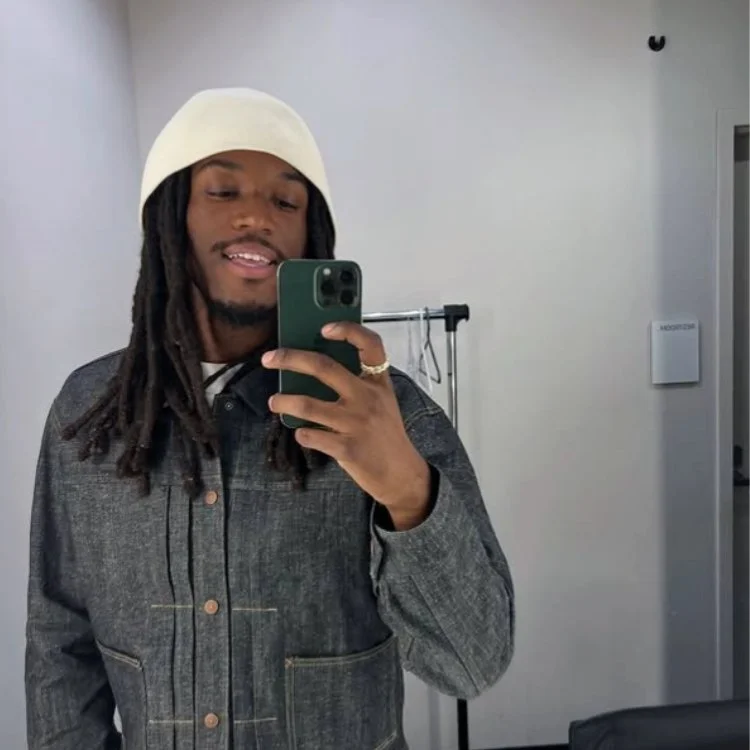An Independent Album and a U.S. Tour: Saba’s 2025 Playbook
Saba via Insta
A Sequence That Kept Ownership
Chicago rapper Saba stayed fully independent in 2025 and ran a story‑first campaign that other indie artists can actually copy. He anchored the year with a full‑length collaboration with No I.D., then translated that narrative into tickets with The Big Picture Tour—a sequence that kept ownership, added partners only where they mattered, and turned every announcement into movement. Let’s see what we can learn from Saba’s takeover!
An Album That Set the Tempo
On March 18, 2025, Saba and No I.D. released From the Private Collection of Saba & No I.D. through his own business umbrella, aligning the music’s diaristic tone with a rollout built on clarity and pace. The record’s reception, including Best New Music from Pitchfork, gave him momentum he could ride for months. Notice the mechanics: announce with unmistakable artwork and a single visual, publish the credits and collaborators in one place, and keep your press quotes handy for future posts. Every time he shared a clip or interview, the album title and release date traveled with it, so even casual scrollers absorbed the basics.
If you’re mapping your own cycle, time the first visual to arrive within a day of your announcement and pin it across all of your profiles. Keep one concise artist statement consistent everywhere—site, socials, distributor notes—so curators and blogs lift the same language you want fans to remember. Keep it simple!
Turning a Headline Into a Route
By mid‑April, Saba shifted from “listen” to “show up.” He announced The Big Picture Tour in a single sweep and routed U.S. dates through June and July—Dallas to Austin to Atlanta, New York to Los Angeles, Denver to Phoenix—with Ovrkast. appearing on select bills. The announcement post linked back to his official tour page and primary ticketing, which made that page the source of truth as additional details rolled out. City‑level reminders, local openers, and radio drops kept the feed warm in each market without resetting the whole story.
You can mirror this: publish one clean landing page with dates, rooms, and age limits; embed a short live clip at the top; and update it before you post anywhere else. In each market, schedule one local cosign (DJ or opener), one micro‑video near the venue, and a same‑day reminder in Stories pinned to a highlight called “Tour.”
Owning the Middle: Visuals, Merch, and Meaning
Because Saba controls the frame, the visuals stayed coherent. The color palette, the fonts, and the language matched the album and the tour. That level of consistency makes low budget content feel premium. A simple rehearsal clip filmed on a phone can read like a planned campaign asset when it uses the same fonts and the same tone as the cover and the tour poster. Pair this with a focused merch capsule that launches in the same week as the first shows. Even two products on your profile storefront, such as one tee and one hat or a dog tag necklace, can convert warm listeners while they are already paying attention.
If you are starting from scratch, set a two week timer. In week one, build the visual world. Finalize the cover, the poster, and the font choices. In week two, prove that the project is alive. Post a fifteen second rehearsal clip, a short moment of the crowd singing from a past show, and a studio snippet that lines up with track two on the album. Write and save captions in advance that repeat your project title two times and your date one time so that every post reinforces the same message.
Partnerships Without Losing the Plot
Saba’s releases move through his independent structure (Saba Pivot, LLC) while engaging allies where they add reach—press for discovery, booking for routing, retail partners for physical. That balance lets an indie artist scale without diluting the voice. If you don’t have those partners yet, simulate them: use a press page on your own site, build a simple one‑sheet for promoters, and keep a shared calendar where everyone on your team can see deadlines for art, assets, and on‑sale times.
Why This Approach Still Works
The sequence—album anchors the story, tour converts attention—sounds simple, but the execution details are what make it durable. A consistent artist statement removes guesswork for curators. A single source‑of‑truth page earns backlinks from blogs and keeps fans oriented. Market‑level content turns a national headline into rooms that actually fill. And a modest but intentional merch plan makes the numbers work while you’re growing.
If your last drop felt scattered, collapse the next cycle to one page, one poster, one short visual, and one city you can reliably fill. Then add pieces only when the first pieces stick.
Keep the Momentum Going
If this sparked ideas, save the post and text it to the one artist in your circle who needs a win. Sketch your own 60‑day ladder—announcement, first visual, release, first show—and pin it across your profiles. Publish a tour landing page before you tweet dates, pick one local collaborator in each city, and stage your visuals so every post repeats your album title and next show date. Small, consistent steps compound—one thoughtful move at a time.
References
Saba Announces U.S. “Big Picture Tour”
Saba Announces Summer 2025 U.S. Tour Dates
Saba (Rapper) — Background & Business
From the Private Collection of Saba & No I.D. — Album Review (Pitchfork)

